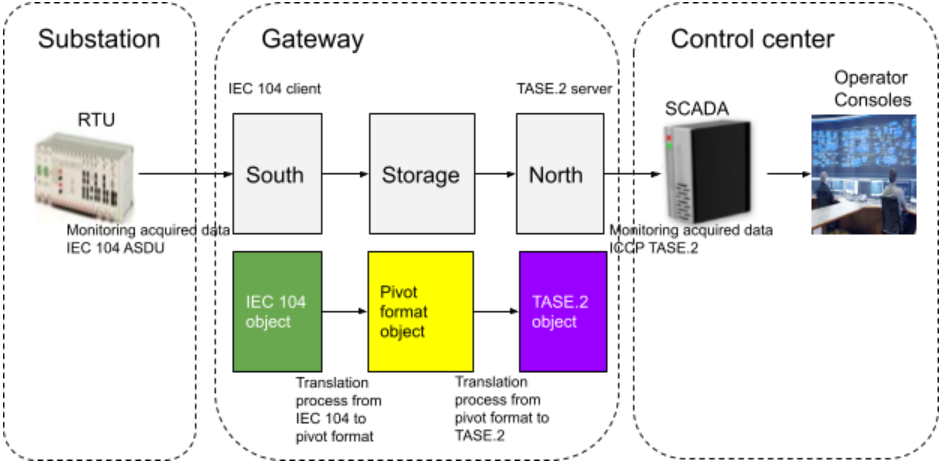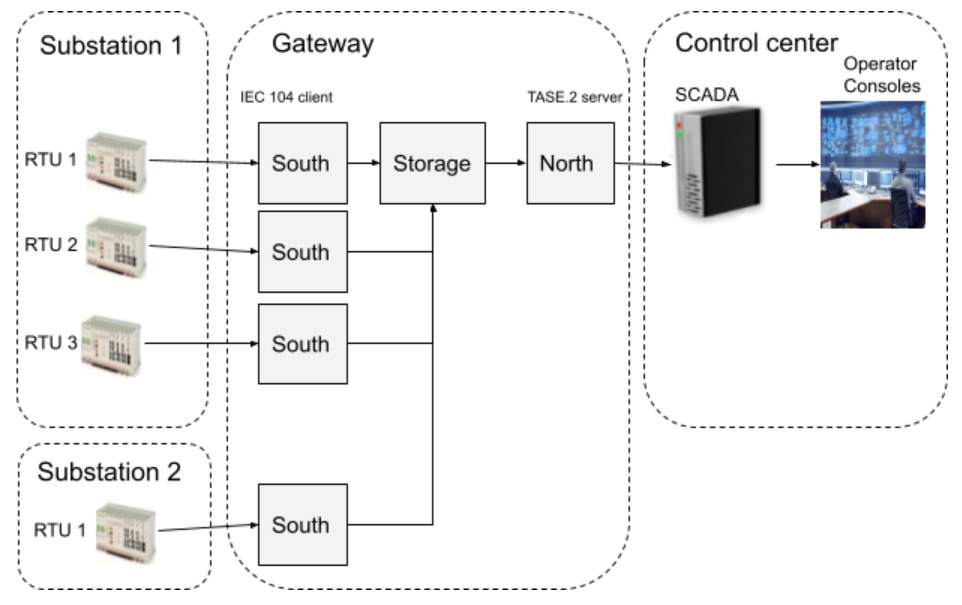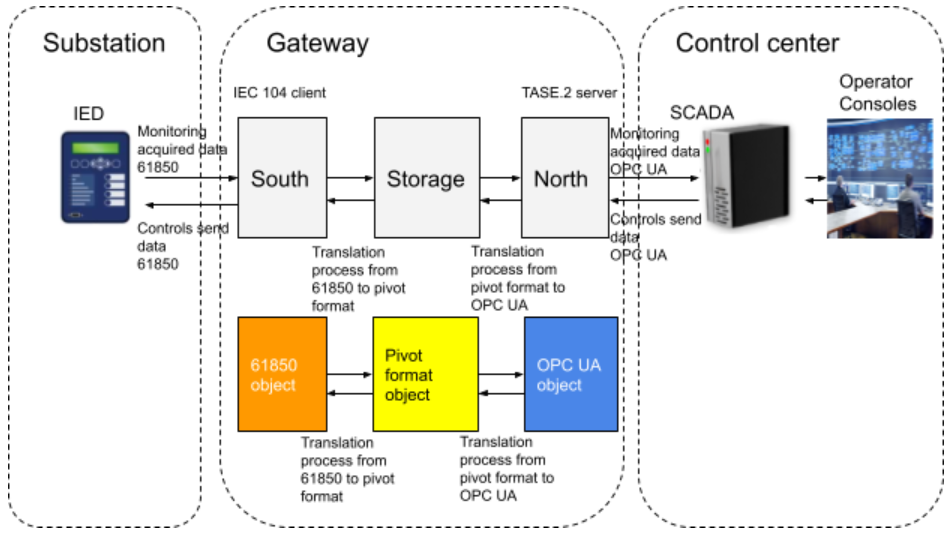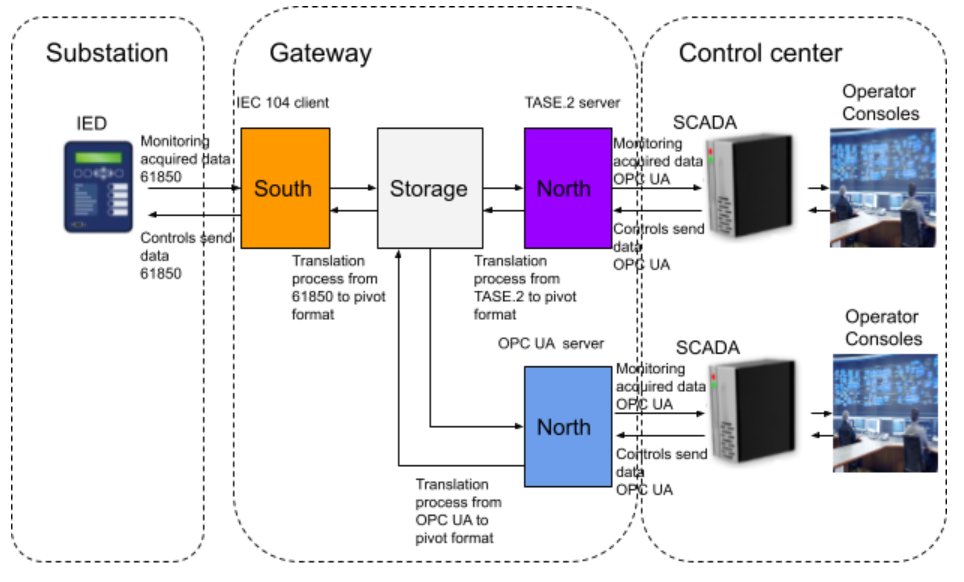...
All translation mechanisms introduce a limitation of functionality in the translated space compared to the original space. The major challenge is to provide some correspondences between the two systems, with a limited impact to the original scope of features.
Use case 1: monitoring
Single Substation/RTU gateway
In this use case, monitoring data are acquired from a field device called RTU (Remote Terminal Unit) which acts as a IEC 104 server (slave) and are exposed to the central SCADA which acts as a ICCP TASE.2 client. Each incoming message from the RTU comes as an IEC 104 ASDU object. The south service plugin applies a first translation process which consists of (1) reading and checking the ASDU object using the IEC 104 data model and (2) mapping each data attribute to the corresponding pivot format data attribute. Once the message is converted to a pivot format object, it can then be stored or consumed by the north or any other service. The north service plugin can then apply a second translation process which consists of (3) reading and checking the pivot format object using the pivot format data model and (4) mapping each data attribute to the corresponding TASE.2 data attribute. The resulting TASE.2 object can then be exposed to the TASE.2 client by the north service plugin.
Multiple Substation/RTU gateway
In this alternative scenario, the gateway is connected to multiple RTUs located in multiple substations. Each South plugin (IEC 104 client) is connected to an RTU (IEC 104 server) to collect data. The collected data flow then through the Storage and the North plugin (TASE.2) to expose data to the SCADA.
Use case 2: monitoring and control
Single Scada/single protocol
In this use case data flows in two directions: monitoring and control.
...
Control data are received from the control center SCADA which acts as a OPC UA client and are sent to the IED which acts as a 61850 server. Each incoming message from the control center SCADA comes as an OPC UA object. The north service plugin applies a first translation process which consists of (1) reading and checking the OPC UA object using the OPC UA data model and (2) mapping each data attribute to the corresponding pivot format data attribute. Once the message is converted to a pivot format object, it can then be stored or consumed by the south or any other service. The south service plugin can then apply a second translation process which consists of (3) reading and checking the pivot format object using the pivot format data model and (4) mapping each data attribute to the corresponding 61850 MMS data attribute. The resulting 61850 MMS object can then be exposed to the 61850 client by the south service plugin.
Multiple Scadas/multiple protocols
In this alternative scenario, the gateway is connected to multiple SCADAs using two different protocols. The North plugin (TASE.2) exposes data to the TASE.2 SCADA and the North plugin OPC UA exposes data to the OPC UA SCADA. Instead of having a one to one translation process (61850 to TASE.2, 61850 to OPC UA, TASE.2 to 61850, OPC UA to 61850), we use the pivot format to transmit data from 61850 to both TASE.2 and OPC UA. The translation process is done only once for each protocol.
Benefits and challenges of a pivot format
...
| draw.io Diagram | ||||||||||||||||||
|---|---|---|---|---|---|---|---|---|---|---|---|---|---|---|---|---|---|---|
|
In redundant network configuration or generally in cases where several communication paths exist between one client and one server, the path checking exploration mechanism allows the client to try all the paths one by one without making any difference between them. The client uses the first available path. On disconnection this procedure starts again from the beginning.
...



